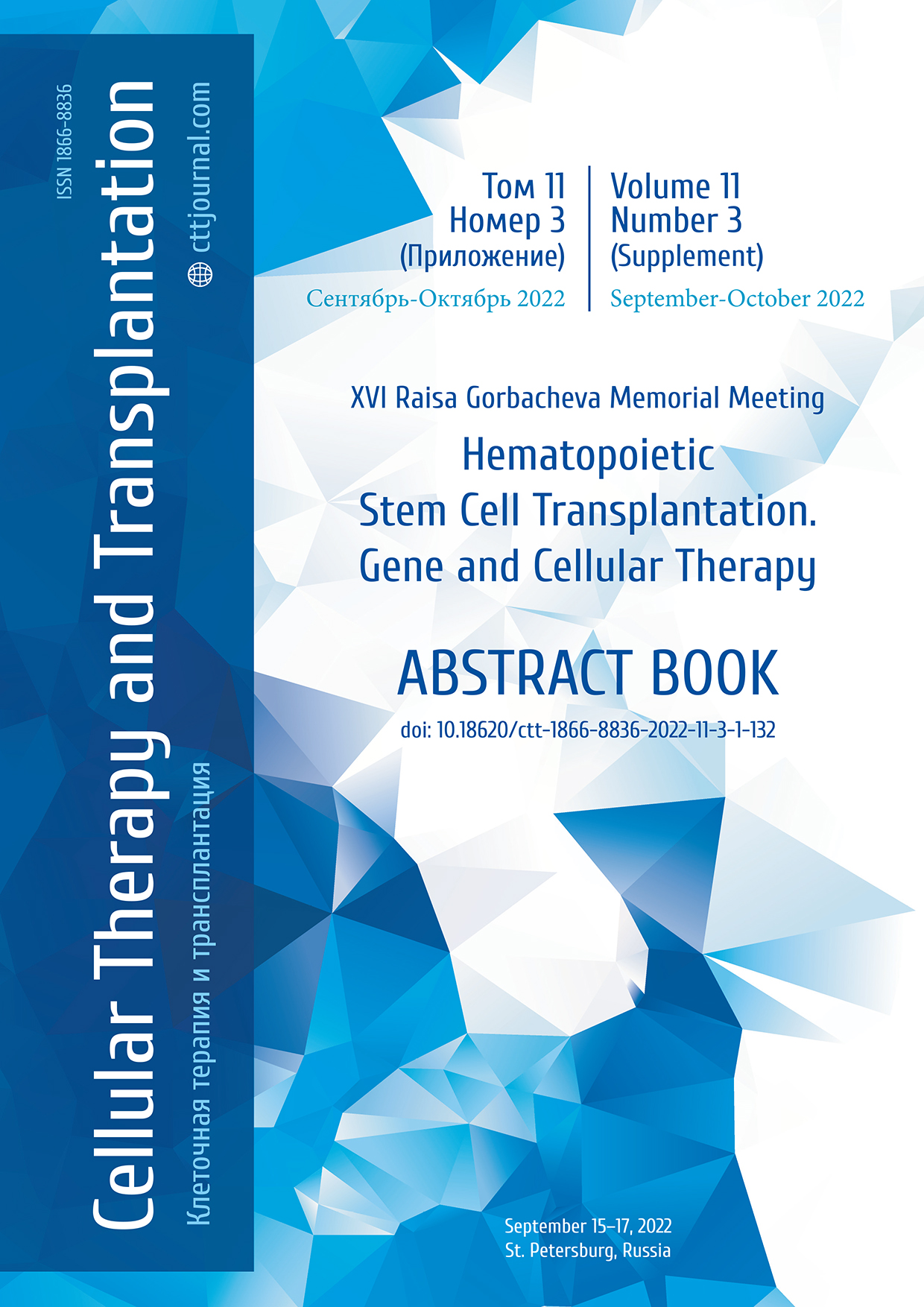PI-01. Invasive fungal diseases of the maxillofacial region, nasal cavity and paranasal sinuses in hematological patients and patients with post-COVID syndrome
Irina B. Baranova1,2, Andrey I. Yaremenko1, Marina O. Popova2, Yulia A. Rodneva2,3, Oleg I. Dolgov2,3, Anna A. Zubareva3, Ilya Yu. Nikolaev2, Olga N. Pinegina5, Margarita V. Malyarevskaya6, Sergey A. Karpishchenko3, Аlena N. Zaitseva2, Alexander N. Shvetsov2, Тatyana А. Bykovа2, Olesya V. Paina2, Oleg V. Goloshchapov2, Sergey N. Bondarenko2, Ludmila S. Zubarovskaya2, Nikolay N. Klimko4, Alexander D. Kulagin2
1 Oncological Department N8 (Maxillofacial Surgery) Pavlov University, St. Petersburg, Russia
2 RM Gorbacheva Research Institute, Pavlov University, St. Petersburg, Russia
3 Department of Otorhinolaryngology, Pavlov University, St. Petersburg, Russia
4 NP Kashkin Research Institute of Medical Mycology, St. Petersburg, Russia
5 Department of Clinical Microbiology, Pavlov University, St. Petersburg, Russia
6 Department of Radiology and Radiation Medicine, Pavlov University, St. Petersburg, Russia
Contact: Irina B. Baranova, phone: +7 (921) 770-00-66, e-mail: irina@acstom.ru
Summary
The incidence of invasive fungal disease (IFD) with involvement of the maxillofacial region, nasal cavity and paranasal sinuses has increased over years. Traditional background immunodeficiency conditions were supplemented by post-COVID syndrome, a disorder complicating the SARS-CoV-2 infection – COVID-19, where glucocorticosteriod treatment (GCS) and high-flow oxygen therapy were used for a long time. Our aim was to evaluate the risk groups, course of the disease, diagnosis and surgical treatment of patients with IFD which affected the maxillofacial region.
Patients and methods
From 2010 to 2022, 6 hematological patients from RM Gorbacheva Research institute (5 children, 1 adult) and 12 patients treated at other clinics of the Pavlov University, were observed, including 11 post-COVID-19 patients with IFD of the maxillofacial region. The IFD diagnosis was based on objective examination of maxillofacial region, endovideoscopic examination of the nasal cavity, nasopharynx, bacteriological, mycological examination of affected tissues, cone beam computed tomography (CBCT) of dental and alveolar system, multi-slice computed tomography (MSCT) of the chest organs and facial portion of the skull, performed in angio-contrast mode, magnetic resonance imaging of brain, spirometry, examination by appropriate specialists. The pathogen identification was based on the microbial morphology, as well as on MALDI-TOF mass spectrometry with a VITEK MS instrument (bioMérieux), model 1.0.0.46. IFD was diagnosed according to EORTC/MSGERC criteria, 2020.
Results
The incidence of IFD affecting the bones of facial area and adjacent soft tissues in allo-HSCT recipients was less than 0.1% during the follow-up period. The aggravating conditions in hematological patients were as follows: agranulocytosis caused by antitumor chemotherapy for acute leukemia was observed in 2 patients (33%); allogeneic HSCT was performed in cases (50%) with acute leukemia and mucopolysaccharidosis type I (MPS I), and the drug-induced immune agranulocytosis has been developed in 1 patient after NSAID therapy. The following comorbidities were found in post-COVID syndrome: arterial hypertension, 92% (n=11); diabetes mellitus, 50% (n=6); chronic kidney disease 67% (n=4); acute liver failure (chemical poisoning), 8% (n=1). Clinical manifestations of IFD were as follows: disturbed nasal breathing, 100%; pain in the upper jaw, 89%; numbness of the jaw and face, 94%; ptosis, 39%; necrosis of the upper jaw mucosal membrane, 44%; swelling of the face and hyperemia, 50%; ophthalmoplegia, 28%; mycotic lung disease, 22%; odontogenic diseases, 50%. In one patient involvement of the lower jaw and neck was revealed; in 17, upper jaw was affected; in 5, zygomatic bone was involved; in 7, nasal structures; in 18, the paranasal sinuses. The CT signs of IFD were as follows: complete reduction of pneumatization of the single or both nasal sinuses, 100% of cases, destruction of the bones at the facial skull portion, 100%. IFD was confirmed by mycological examination in all the studied patients: mucormycosis (n=12), aspergillosis (n=3), a combination of mucormycosis and aspergillosis (n=3). Timing of diagnosis from the onset of local manifestations in the maxillofacial region was as follows: in hematological patients, 7±3 days; in the patients with post-COVID syndrome, from 40 to 270 days. In 83% of cases (n=15), systemic antifungal therapy was used, in accordance with international guidelines and with respect to drug sensitivity of the pathogens. Surgical treatment included necrectomy, resection of affected facial bones, 94% (n=17).
Conclusion
Invasive fungal diseases of the maxillofacial region, nasal cavity and paranasal sinuses are a rare complication in hematological patients, mainly, after allo-HSCT, more often in pediatric patients and occur at a frequency of <0.1%. However, a novel group of immunocompromised patients with post-COVID syndrome has emerged recently. Mandatory conditions for the successful treatment of mucormycosis are early diagnosis and antifungal therapy, surgical removal of affected tissues, control of the underlying disease, and decreased severity of immunosuppression. Surgical treatment leads to occurrence of defects that worsen the quality of life, e.g., requiring complex dento-maxillofacial prosthetics.
Keywords
Mucormycosis, maxillofacial necrosis, osteonecrosis, COVID-19-associated mucormycosis, САМ, COVID-M.


